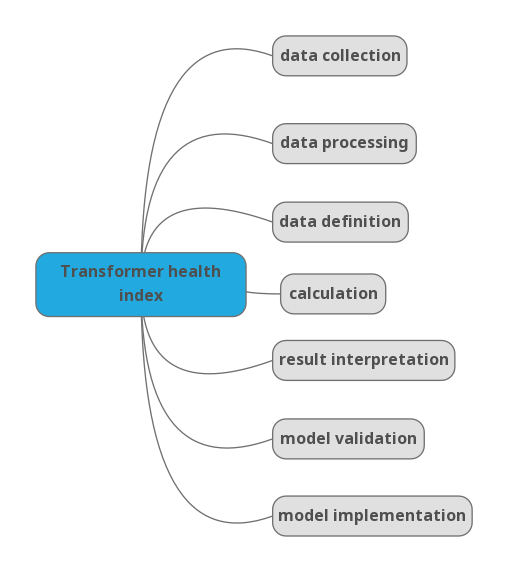Electricity is an integral part of our life and its sudden unavailability can be highly disryptive. Therefore, power and energy companies strives to maintain grid integrity and service continuity. An abrupt power outage leads to market backlash, harsh regulatory actions, and more often, financial losses.
Since power transformers are high-risk and expensive assets of energy supply chain, their failure can disrupt the entire grid integrity. This article focuses on failures due to poor maintenance or management of transformers. It also explores the benefits of implementing agile and intelligent asset management strategies such as transformer health indexing to avoid such issues.
Transformer health indexing
Transformer health indexing (THI) is slowly evolving from an arm-chair discussion in to a hot topic among various stakeholders thanks to CIGRE’s participation. A health index can support lifecycle estimation, risk evaluation, reliability assessment, planning and supporting maintenance/management decisions. Read this blog to learn the basics of THI and enable comparison between various assets within a fleet for better overview and consequent planning.
A fight for outage planning
The year 2021 was full of various dramatic events that have impacted global energy supply chain in many ways. For example, the power crisis in Texas in February 2021 or that in Yorkton, Mountain View (CA) is a reminder of our grid’s vulnerability. Suffice to say that climate and human error can equally disrupt the energy supply chain. These unplanned outages have caused huge financial losses for the operative businesses and disrupted the social life of locals.
Simply having an outage management system (OMS) that promises reduced outage frequency is not enought. It is equally imperative to build a reliable, low-cost, and easily deployable tool for improved outage planning.
One of the best OMS practices is its ability to identify, isolate, and resolve reliability and risk functions, particularly in large and ageing asset fleets. However, this can quickly turn sour if there is an underestimation on frequency, size, and duration of outage due to erroneous (mostly human) judgements.
Rebuilding reliability with THI
There are no dedicated standards for building a model that executes outage planning tasks. However, asset indexing strategies that condenses various critical information in to a single indicator to help in decision making is highly appreciated.
Global utilities, industries, condition monitoring experts and asset engineers apply these self-built models, that are somehow validated to their satisfaction. From a budget prospective utilities require a pertinent view on the risky/ replaceable assets and techno-economical justification of maintenance actions to regulators and stakeholders. In fact, grid digitalization strictly adheres to low cost, highly reliable, and regulator compliant models/solutions.
Under such circumstances using a data-driven THI model with minimum human interference particularly using AI/ML solutions can be extremely beneficial. This can effectively transform THI from a mathematical concept to an actual digital twin with a potential to assist in complex outage planning and reliability improvement tasks.

Figure 1: Various aspects of transformer health index model build-up
For example, Terna s.p.a reported a dramatic fall in outages caused by minor faults post adoption of THI model, particularly with online data. On the other hand, RInfra, India’s largest private power distribution company is using a THI model and condition monitoring data to prioritise asset investments.
While a THI model works well on offline data, it has been observed that the effectiveness increases multifolds particularly when data influx is online and continuous. Having a well-built dashboard such as Ronin AI would further help in cost optimization of ongoing actions and support decision making. This means that digital twins built for asset performance management enables utilities to leverage their online and offline data in to more intelligent risk/reliability based approaches.
Conclusion
Grid integrity is now more important than ever as major European utilities are swtiching to smart grid solutions and renewable energy sources. Abrupt asset failure and outages will have significant economic and market backlash for the service provider. Health indexing models can give an overview of the actual status of transformers as well as their failure probability. A health index trend when compared against asset lifecycle can effectively summarize the risk and remaining service life of transformer. This information is ultimately the key to decide whether to repair, refurbish, or replace the asset in long run.
A scientific and data-driven THI model inside a user-friendly interface will disperse the burden of data mining, management, and analysis thereby saving time, money and without compromising quality.

